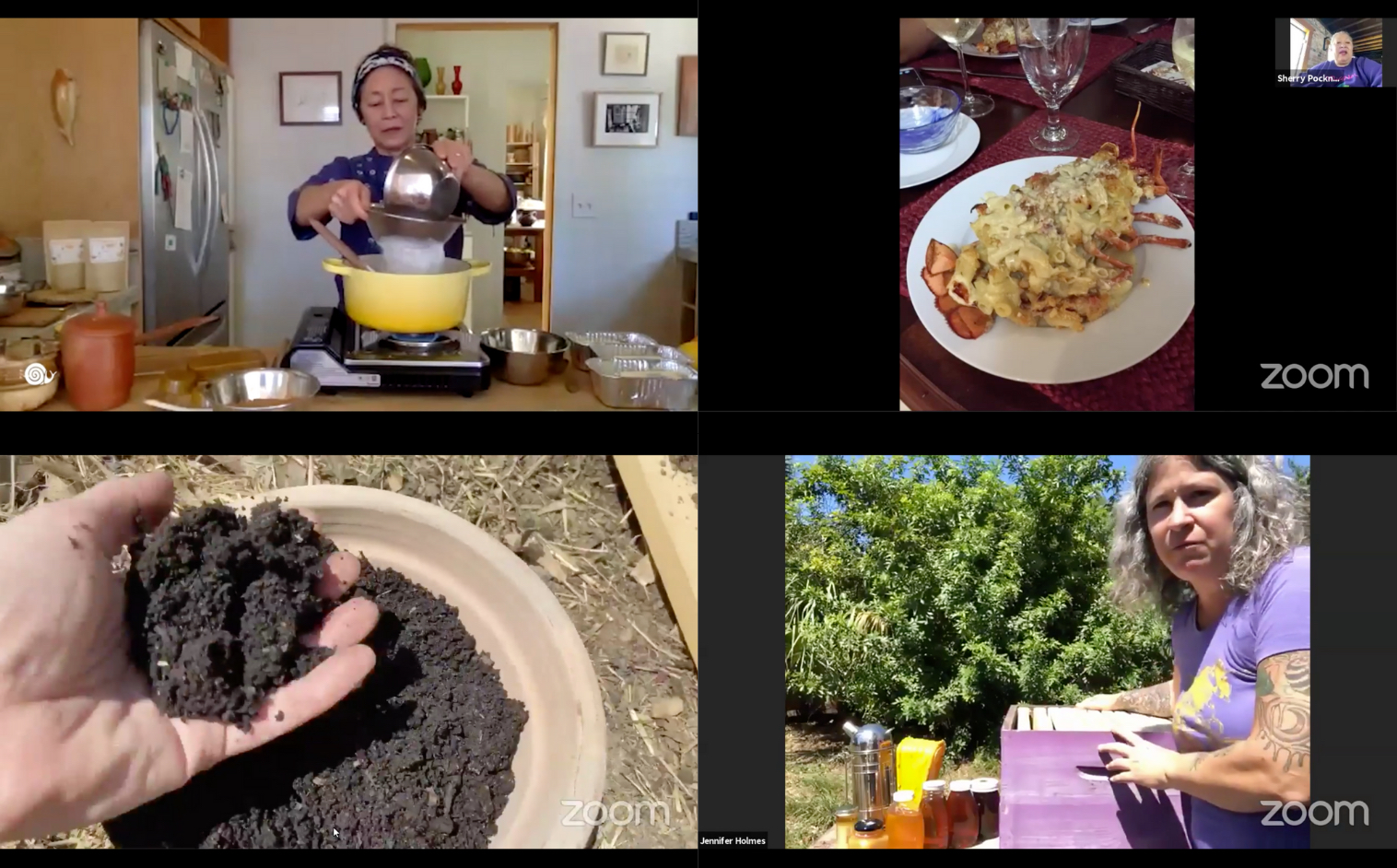
Screencaptures of Slow Food USA webinars (L-R: Japanese Curry Bricks with Sonoko Sakai, Chef Sherry Pocknett presenting to Slow Fish Crew Together, Beekeeping Basics with Jennifer Holmes, Soil with Alison Magill) (Courtesy of Slow Food USA)
Slow Food USA’s mission is to champion “good, clean, and fair food for all”. The grassroots organization operates in 160 countries around the world, and the USA group has over 150 local chapters. Members include farmers, fishers, teachers, chefs, activists, and scientists around the country. “A lot of our work revolves around gatherings, bringing people together, meeting in person, enjoying food together,” says Executive Director Anna Mulé. “And really, you know, learning about the whole chain from farm to fork through food but also enjoying the taste of food as well.”
In the wake of COVID-19, the organization has had to find new ways for members to connect.
“You know, all our well-thought-out strategies don't work anymore,” laughs Anna. “So it's a matter of being really flexible, being ready nimble, and just trying new things ... to see what, what really works and what is most effective to respond to the needs of the community.”
This has meant capitalizing in a growing number of families cooking at home. The organization has moved in-person programming to Slow Food Live, a live Zoom-based skillshare program that covers topics like gardening and cooking. Slow Fish Crew Together, originally planned as a conference in New Hampshire bringing together indigenous fish harvesters, small scale producers, and others in the fishing industry, has also moved to a virtual space. In the Slow Fish Crew Together webinar and in other spaces for online gathering, members share strategies, frustrations, and stories. “The needs on the ground are so different,” says Anna. “So for example, some ranchers used to sell primarily to restaurants, and to airports, and to like large scale food distribution platforms, and now they're struggling because they're, you know, they're trying to pivot to online sales, to direct-to-consumer. If they're able to pivot that way, they've seen a really amazing response. People are eager and ready to buy online, but (producers) don't necessarily have the technologies, and the processes set in place to do that quickly and effectively. So they're working overtime to fulfill these online sales.”
But not everyone has the bandwidth or resources to set up an online store, delivery, and customer management system that easily. “So Slow Food East Bay, for example, is establishing a food hub at a central farm, where small scale producers can drop off their goods,” says Anna. “And then they and partners will manage all the logistics of getting that to low-income communities who need food right now. I think it's all about logistics right now.”
Slow Food USA is concerned that existing food and nutrition inequalities will continue to be solidified via policy and federal assistance. They’ve worked to step up fundraising and advocacy efforts. “We're looking especially to make sure that small scale family farmers and ranchers, community-based fishers, are not overlooked in things like the CARES Act,” says Anna. “Our worry in all of this is that there's a limited amount of funding and we don't want Big Ag to win. We want funds to go to the small scale, family farmers, the folks who are really active players in the local communities and making sure that those communities are getting healthy food.”
Hear the story on this episode of Earth Eats.












